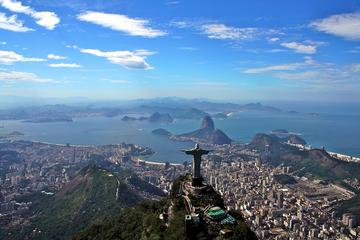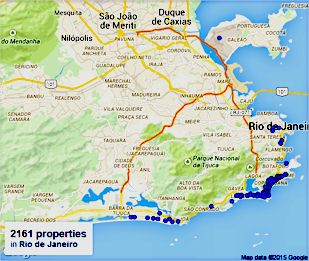» BRAZIL • Discover Brazil • Southeast Brazil • Rio de Janeiro
Discover Magical Rio de Janeiro
Rio de Janeiro is famous for its natural settings, its Carnival celebrations, samba and other music, and hotel-lined tourist beaches, such as Copacabana and Ipanema, paved with decorated black and cream swirl pattern mosaics known locally as 'pedra portuguesa'.
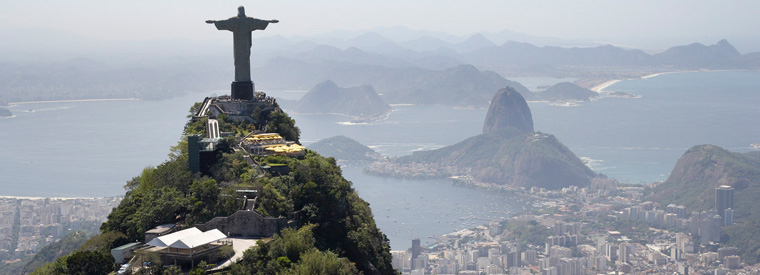
A | B | C | D | E | F | G | H | I | J | K | L | M | N | O | P | Q | R | S | T | U | V | W | X | Y | Z
» Saara Shopping District
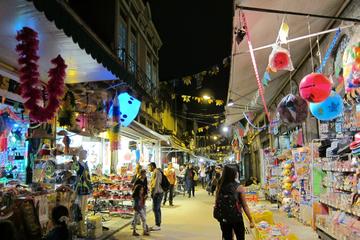
Like every paradise for bargain hunters, the Saara Shopping District is a maze where you can find anything and everything. Be it T-shirts with witty print, colorful accessories, soccer jerseys or the iconic Brazilian flip flops: the Havaianas. The Saara Shopping District consists of a myriad of shops along the streets of Passos, Andradas, Buenos Aires, Alfandega as well as the Praça da República square. The atmosphere within Saara is very authentic and couldn't be further from the polished, air conditioned malls …
» Sambadrome
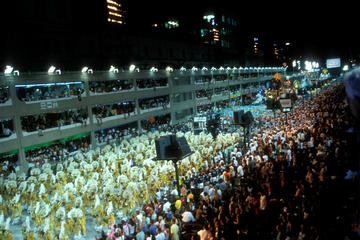
At Carnival time the Sambadrome is the heartbeat of Rio de Janiero. A 3,000ft (700m) stretch of road designed as a 90,000 capacity parade area with stadium seating rising on each side of the road. Samba schools have 80 minutes to parade through the center of the Sambadrome performing their samba school anthem impressing the crowd with their music, dancing and floats. it is an incredible spectacle; seven teams compete each night in a concert that lasts over ten hours …
» Santa Marta Favela
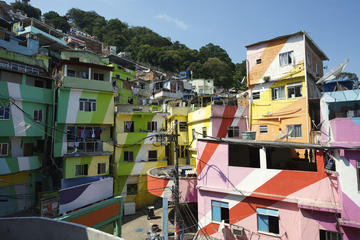
The first of the city's 'pacified' (police-controlled) favelas, Santa Marta is one of the few that is safe and accessible to tourists, with tours aimed at raising awareness and funds to help improve the safety and living conditions of Rio's notorious slums. Santa Marta Favela is no stranger to the limelight - its innovative Favela Painting project, the brainchild of Dutch duo Haas & Hahn, has garnered global attention, and it even starred in the music video for Michael Jackson's 1996 hit 'They Don't Care About Us,' …
» Santa Teresa
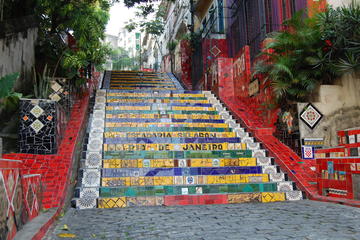
This unlikely cobblestoned neighborhood close to the center of Rio de Janeiro has long been a tourist favorite among visitors to this Brazilian city. Santa Teresa is located on the top of the hill of the same name, and takes its name from a convent built in the 1750s. It has a history as an upper class neighborhood, as some of its larger and more elaborately built mansions can attest. Santa Teresa has become an artist enclave in recent years, and is a great place to spend an afternoon …
» Sao Bento Monastery
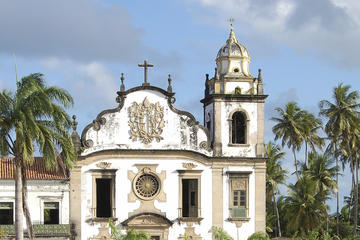
From the outside, the Sao Bento Monastery and the Church of Nossa Senhora de Montserrat appear to be unassuming and even a bit austere, a nod to 16th century Roman Catholic chastity. Once inside, however, visitors can see how the elaborate nave, filigreed altar, and rococo wooden carvings speak to 16th century Roman Catholic fabulousness. Founded by a group of Benedictine monks - Sao Bento means Saint Benedict - that relocated from Salvador da Bahia in 1590 …
» Sao Conrado Beach
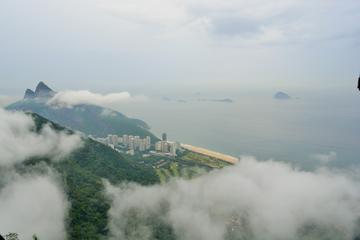
Whether you're here for the surf, the golden sands, or to soar in the skies above, visiting Sao Conrado Beach is a highlight of Rio de Janeiro. Here in this affluent, oceanfront neighborhood that's sometimes called Praia Pepino, visitors will find an eclectic combo of surfers, paragliders, wealthy elite, and the poorest residents in Rio. Just up the hill from Sao Conrado is the infamous Rocinha favela, which is one of the city's poorest areas and also its largest slum. The juxtaposition of social classes is evident …
» Sao Francisco de Penitencia Church
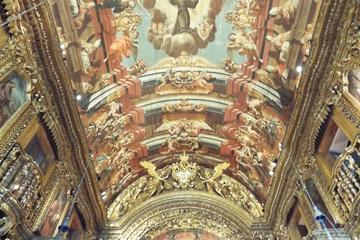
In a city as oversized and grandiose as Rio de Janeiro, it's surprising that a small, historic church is one of its most mesmerizing sights. Located in the city's pulsing downtown, this church is best known for a gold interior that will silence the staunchest of critics. Even travelers who aren't into architecture can appreciate the intricate beauty, where every fold and interior detail is brilliantly covered in gold. This is also one of the oldest churches found anywhere in Brazil, and is a shining example of Baroque style in the middle of modern Rio …
» Sao Joao Fort
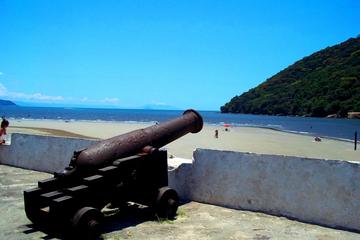
Built in the mid-1500s, Sao Joao Fort was officially put into service in 1618, when it was used to protect Guanabara Bay from an invasion by the French. This impressive structure is comprised of four batteries and is home to fifteen massive cannons. Sa Joao Fort later became a base for the Brazilian Army and today, it's a popular site for travelers looking to explore the nation's history and culture. Travelers can explore the on-site chapel, courtyard and gun emplacements while taking in incredible views …
» Selarón Staircase (Escadaria Selarón)
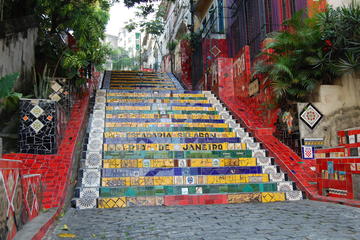
Decorated with over 2,000 brightly colored tiles in the colors of the Brazilian flag, the Selarón Staircase (Escadaria Selarón) is one of Rio's most vibrant and striking landmarks, marking the boundary between the Lapa and Santa Teresa neighbourhoods. The brainchild of Chilean artist Jorge Selarón, the iconic steps have become one of the world's most famous pieces of street art, drawing millions of visitors and gaining exposure in international commercials, pop music videos and magazines …
» Sitio Roberto Burle Marx
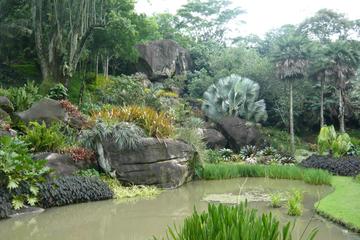
Brazil's most famous landscape architect, Roberto Burle Marx, left his legacy all over the country and was known for creating some of the most beautiful park spaces in the city of Rio. His own home, the big estate that is today known as Sitio Roberto Burle Max, is no exception and is undoubtedly one of his masterpieces. The property is a former banana plantation, which Marx bought together with his brother in 1949 and transformed into intricately designed gardens. Today, over twenty years after the owner's death …
» Statue of Christ the Redeemer
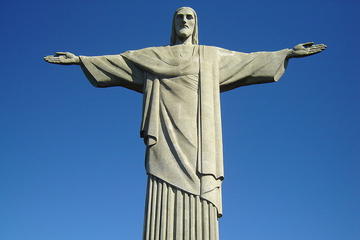
Keeping a watchful eye over the people of Rio de Janeiro, the Statue of Christ the Redeemer (or Cristo Redentor) sits atop Corcovado 2,300 feet (700 meters) above the city. It was voted one of the New Seven Wonders of the World in 2007. The largest art deco statue in the world, it is 130 ft (39 m) tall and the arms measure 98 ft (30 m) across. Made of reinforced concrete and sandstone the statue was unveiled in 1931. On a clear day the views from the base of the statue are fantastic. At night the statue is lit up …
» Sugar Loaf Mountain
You'll see stunning views of Rio from atop Sugar Loaf Mountain (or Pão de Acúcar) which rises at the point where Guanabara Bay meets the Atlantic Ocean. Whichever way you look the city is a delight of sweeping beaches, sparkling water and green peaks. If you make the trip up in the late afternoon you can watch Rio as the light disappears and the fairy show of night lights begins. Looking west you'll have an incredible view of Corcovado with the statue of Christ the Redeemer all lit up …
» Teatro Municipal
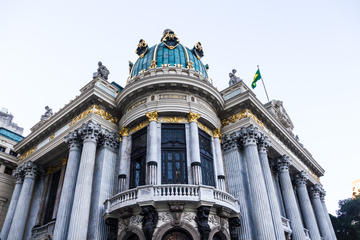
Having reopened in 2010 after an exhaustive $35 million renovation, the stunning Teatro Municipal in downtown Rio de Janeiro looks as well-crafted and intricately designed as a Carnival float. Golden statues on the roof sparkle in the tropical sunshine while stately neoclassical columns buttress the façade. Inside, grand spectator suites and elegant balconies offer superb views of the stage where Sarah Bernhardt, Maria Callas, and Igor Stravinsky once captivated the audiences of the Brazilian capital …
» Teles Arch (Arco de Teles)
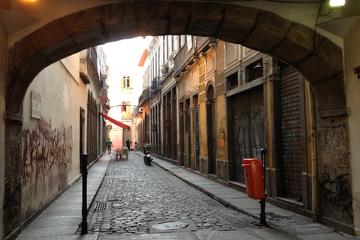
Telles Arch, or Arco de Teles, is a colonial gateway and quasi time portal to 19th century Rio. Leading from open Praca Quinze to narrow Travessa do Comércio, the arch is a funnel from modern day Rio to the charm of its old town past. While arches were originally common in Rio, all have either succumbed to decay or have been replaced by modern development. Telles Arch is all that remains of the city's colonial arches, and the pedestrian alleyway it frames today is lined with bars, restaurants and cafés …
» Tijuca National Park
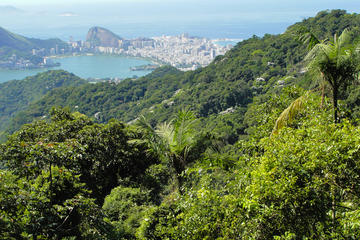
A lush Atlantic rainforest, Tijuca National Park is an absolute wonder it is the world's largest urban forest which covers 12.4mi² (32km²) and was a result of incredible forward thinking by Emperor Dom Pedro II. In 1861 he saw the deforestation of the land around Rio and ordered that Tijuca be replanted to secure the water supply for future citizens. It was replanted over ten years ago and still plays a key role in making sure Rio has fresh water. The national park includes the Corcodova …
» Tiradentes Palace

While it may be hard to pull away from Rio's white sand beaches, there's more to the vibrant Brazilian city than sand and Sugarloaf Mountain. One of those spots is Tiradentes Palace, a soaring, concrete, exquisite palace that's named for 'Tiradentes,' a Brazilian revolutionary who was jailed while fighting for the nation's independence. While his cell once stood on the very ground where the palace stands today, when the palace was constructed in 1926, it not only adopted the hero's name …
» Urca
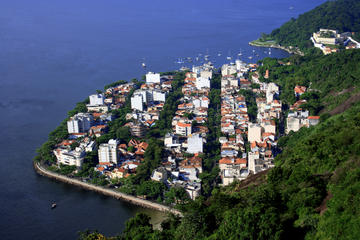
Squeezed on a curved slice of land at the foot of Sugar Loaf Mountain and its shorter, wider companion at the other end of the cable car, tiny Urca remains one of Rio's most unique neighborhoods in that it has retained its intimate feel and close-knit character for decades, despite rapid and unrestrained development in other sections of the city. Facing west across an inlet of Guanabara Bay and overlooking the stately districts of Botafogo and Flamengo, Urca is home to several restaurants and bars …
» Vista Chinesa
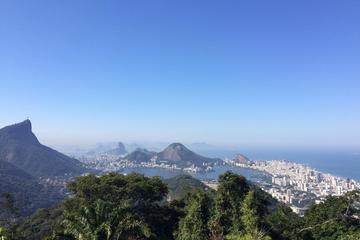
With iconic landmarks like Sugar Loaf and Corcovado mountains, Rio de Janeiro has no shortage of famous lookouts, but if you're looking for a unique view away from the masses, head to the Vista Chinesa. An oriental style pavilion perched at 380 meters on the Alto da Boa Vista, the Vista Chinesa (literally 'the Chinese View') is one of the most striking monuments of the Tijuca Forest, erected in 1903 to honor Rio's Chinese immigrants. Regarded as one of the grandest Chinese monuments in South America …
» BRAZIL • Discover Brazil • Southeast Brazil • Rio de Janeiro



